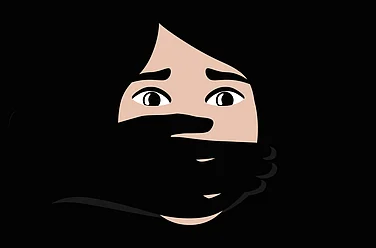In a bid to raise awareness and to unite people across the globe in the battle against the Acquired Immunodeficiency Syndrome (AIDS), every year, December 1 is observed as World AIDS Day.
According to UNAIDS, globally there are an estimated 38.4 million people who have HIV. Despite being identified in 1984, HIV claimed more than 35 million lives, making it one of the most destructive pandemics in history.
But on the contrary, it is also true that since the 1990s, the world has witnessed remarkable progress in the field of research and medical practices associated with AIDS.
According to UNAIDS 2022 fact sheet, annual new HIV infections have declined by 32 per cent since 2010.
What is AIDS?
Acquired immunodeficiency syndrome or AIDS is defined as a disease caused by the Human Immunodeficiency Virus (HIV) which meddles with the functioning of the immune repertoire and rthus weakens the body's ability to fight infections and diseases.
How AIDS is transmitted- the myth and the truth
Mistaken ideas and myths still do prevail in abundance regarding the tranmission pathways of the disease. From the fear of transmission from touching an infected person, shaking hands or even breathing the same air to considering mosquitoes to be the vector carrying the HIV and thus spreading AIDS - the list of apprehensions are quite long.
The scientifically established truth tells us that the disease can be transmitted only through the use of contaminated syringe for medical purposes or shared activities such as injecting drugs into the bloodstream, sexual intercourse not protected through a condom or diaphragm, or from an infected mother to child during pregnancy, birth or through breastfeeding.
Unforunately medical science is yet to discover the permanent cure of the disease. This makes prevention the best possible way to protect oneself against this infectious disease.Taking conscious decisions like using a disposable syringe everytime blood is drawn from body or tranfused into someone's system, using protection during sexual intercourse and getting tested for HIV before planning a family can save us big time.
History of World AIDS Day
The origin of World AIDS Day dates back to August 1988 when James W. Bunn and Thomas Netter conveyed the idea for the observation of this day to the Director of the AIDS Global Program, Dr Johnathan Mann, who approved it for December 1.
It was a part of their effort to get some semblance of control over the deadly pandemic that sby then had claimed lives of countless people.
Both James W Bunn and Thomas Netter were public information officers for the AIDS Global Program of the World Health Organisation.
Significance of the day
What necessitates the observation of World AIDS Day is the unbearable stigma that still prevails around the disease. Also, the day is observed to focus on better caregiving and support for those who are already living with the disease.
It is needless to mention that how the Covid-19 pandemic jeopardised the HIV prevention, testing and treatment procedures during the lockdown. Hence, World AIDS Day this year holds more importance as it reminds the public and government that HIV has not gone away.
More fundraising, increased awareness, fighting prejudice and education people - all of them still hold much relevance.
Theme of World AIDS Day 2022
The World AIDS Day theme for 2022 is “equalize”.
According to UNAIDS, “The slogan is a call to action. It is a prompt for all of us to work for the proven practical actions needed to address inequalities and help end AIDS. These include - Increase availability, quality and suitability of services, for HIV treatment, testing and prevention, so that everyone is well-served. Reform laws, policies and practices to tackle the stigma and exclusion faced by people living with HIV and by key and marginalised populations, so that everyone is shown respect and is welcomed. Ensure the sharing of technology to enable equal access to the best HIV science, between communities and between the Global South and North. Communities will be able to make use of and adapt the “Equalize” message to highlight the particular inequalities they face and to press for the actions needed to address them.”
How India is doing in terms of battling AIDS?
It is true that India has been working hard towards the eradication of HIV/AIDS which poses serious threat to a large population living in the country. very long way to go before India achieves the 'AIDS free status'.
According to the latest UNAIDS report released last week, India features among countries which saw some of the most significant reductions in HIV infections even amidst Covid-19 and other crises. The other countries are South Africa, Nigeria and the United Republic of Tanzania.
Recent reports reflect a steady decline in HIV infections in India.
But the HIV Estimation 2021 report also shows that there are still an estimated 24.01 lakh patients in the country, including 51,000 children.
According to the government reports, eight states, including Andhra Pradesh, Karnataka, Tamil Nadu and Telangana are seeing most of these patients.
Around 45 percent (10.83 lakh) of total estimated PLHIV are women, and 2 percent -- about 51,000 -- are children below the age of 12 years.
The highest number of estimated PLHIV is in Maharashtra (3.94 lakh), followed by Andhra Pradesh (3.21 lakh), Karnataka (2.76 lakh), Uttar Pradesh (1.78 lakh), Tamil Nadu (1.63 lakh), Telangana (1.56 lakh), Bihar (1.43 lakh), and Gujarat (1.14 lakh).
Together, these eight states account for 72 percent of the total estimated PLHIV in India.


























